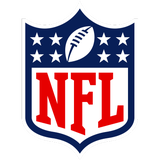ST. PAUL, Minn. — The path seems arduous.
Think about the Central Division — from the Dallas Stars, who are in another conference final, to the Avalanche, who usually reload, and top-seed Winnipeg. The Utah Mammoth have an impressive young core and the Nashville Predators aren’t likely to belly flop again.
Advertisement
So, where do the Minnesota Wild fit among the Western Conference contenders? They went from the best record in the league in mid-December to just sneaking into the playoffs after a dramatic win in the season finale. But the oh-so-close loss to the Vegas Golden Knights in the first round did feel different than the others in the last decade.
“I don’t think there’s any question this is a team on the rise,” said former NHL GM Craig Button.
On the rise, sure, but how close to actually making a run?
This pivotal summer will have a lot to do with it. GM and president of hockey operations Bill Guerin is armed with $16.4 million and a potentially valuable trade chip in Marco Rossi to bolster his roster. There are needs, for sure, and to figure out where, we used Dom Luszczyszyn’s Net Rating model to compare the state of the Wild roster to the average roster of the NHL’s four conference finalists.
This snapshot of the Wild roster is a bit incomplete, considering Rossi’s possible departure, plus some rookies slated to make the lineup in Zeev Buium, Danila Yurov and Liam Ohgren. The ratings here are based on what they contributed during the 2024-25 season. For Buium, it was his college numbers at the University of Denver; for Yurov, we used replacement-level stats as he’s coming from the KHL.
But it provides a picture of how the Wild compare to the average roster from the four teams that won two playoff rounds: the Carolina Hurricanes, Florida Panthers, Dallas Stars and Edmonton Oilers. The Net Rating model has a long track record of demonstrating predictive value, and even though it’s imperfect, there’s some reliability in how it can put into perspective what individual players are contributing to the team’s success from an offensive and defensive standpoint.
We based this on the idea that the Wild would not re-sign pending unrestricted free agents Gustav Nyquist, Justin Brazeau, Marcus Johansson and Jon Merrill. Declan Chisholm is a restricted free agent, though if he’s re-signed, he could end up a seventh defenseman with Buium jumping into the lineup.
Advertisement
The matchup

What stands out right away is how well the Wild match up to the top teams in terms of how they defend. Their overall rating of 18.9 tops the average of the four conference finalists, with a stick tap to the forward group of stout two-way players like Kirill Kaprizov, Matt Boldy, Joel Eriksson Ek and Marcus Foligno. The defensive rating for the Wild’s blue line, despite a minus-4.3 rating for Zach Bogosian and a minus-1.7 rating for Jake Middleton, is 6.4, above the 4.4 for the conference finalists.
The defense, as Guerin has put it, is pretty much set.
What does need some work, and perhaps some significant help, is the offensive support in the forward group beyond Kaprizov and Boldy. The average conference finalist has two forwards in the elite category, meaning above the 11 in net rating. The Wild pretty much have that in Kaprizov (19.3), arguably one of the top 10 players in the world, and Boldy (10.2). Joel Eriksson Ek (9.1) matches up pretty well as the supporting top-line forward to the conference finalist (9.8).
But there are only two other Wild forwards with a positive net rating: Mats Zuccarello (5.5) and Rossi (4.2), who could be on the move. The conference finalists have at least three other top six forwards with a rating of three or above. Foligno, for what it’s worth, was at a minus-0.3 net rating even though he had arguably one of his best seasons.
The Wild’s blue line is solid overall, especially the top four with Brock Faber and Jonas Brodin, and Jared Spurgeon is tops in terms of the net rating at 5.2. The conference finalists’ average has a No. 1 defenseman at 10.3, a top-pair defenseman at 8.0 and another top-four D at 4.3. Brodin is the Wild’s next highest at 3.7, though we can see Faber’s 1.2 net rating as lower than what he produces as a franchise-caliber defenseman. If Jake Middleton bounces back with a better year from an analytical perspective and Buium grows into the star many people believe he’ll be, then this group will be much closer.
Advertisement
In net, Filip Gustavsson showed he’s a solid No. 1, though his net rating is 2.7, below that of the conference finalist (7.9). But we think most wouldn’t mind having Gustavsson over Stuart Skinner (Oilers) and Frederik Andersen (Hurricanes). Meanwhile, Jake Oettinger (Stars) and Sergei Bobrovsky (Panthers) do have an edge.
So, what do the Wild need this summer?
Some top-six center help
Guerin made it clear at his exit interview press conference what he’s focused on this summer. He’d like to upgrade his center position, supporting their No. 1 in Joel Eriksson Ek, who is also their top shutdown pivot.
“I think Ekky needs a little help,” Guerin said. “He’s in a battle every single night. And there’s no easy nights for him. So I think we could create some help there.”
There will be some internal help in the form of top prospect Yurov, a skilled playmaker who has won a title in the KHL. Guerin admitted there would be some “growing pains” as Yurov tries to prove his 200-foot game, so let’s not just guarantee he’ll be a 2C right away. And if the Wild do trade Rossi, who has been a top-six center most of the season, that leaves another hole.
That’s why you’re hearing about the Wild being interested in veteran UFA Brock Nelson. He’s 33 and the money would have to be right, but he’d bring a stabilizing presence up the middle to take some defensive pressure off of Eriksson Ek. The UFA market for centers isn’t extremely deep, and while Sam Bennett seems like a great fit, his price is only going up during these playoffs, and there’s no guarantee he gets to July 1. John Tavares is out there, if he doesn’t re-sign in Toronto, and Matt Duchene played for John Hynes before in Nashville and would likely come cheaper.

Warroad, Minn., native Brock Nelson could be a potential target in free agency to shore up the Wild’s center depth. (Talia Sprague / Imagn Images)
Guerin also said he “wouldn’t be opposed to a scoring winger.” Balanced scoring is something of a need for the Wild, who dropped off quite a bit when Eriksson Ek and Kaprizov missed several months with injuries. Zuccarello didn’t produce as much when not on a line with Kaprizov. They’re probably going to lose UFA Marcus Johansson, who was a mainstay as a second-line winger all year.
Advertisement
This is where the Wild being connected to the likes of Brock Boeser comes in; for what it’s worth, Boeser’s net rating of 4.4 last season was the same as Rossi’s. Prospect Ohgren could get a shot if he’s ready. Ryan Hartman’s impressive playoffs performance was reminiscent of his 34-goal season a few years back, so he could be an option in the top six.
The Wild could also address this hole in a Rossi trade. Whether it’s targeting the likes of JJ Peterka from Buffalo or another scoring winger, Minnesota could use a boost here. Patrick Kane is also a free agent, as is clutch performer and agitator Brad Marchand. Does Nikolaj Ehlers re-sign with the Jets?
Bottom-six boost
If you look at the sizable difference between the Wild’s forward net rating and that of the conference finalists, the eye-watering negative numbers in Minnesota’s projected bottom six play a large role. The lowest-rated five forwards on Minnesota combined for minus-29.6, compared to minus-16 for the conference finalists.
Yakov Trenin underwhelmed in the first season of a four-year, $14 million deal, which is why his net rating was minus-6.7. He looked like a much different player in the postseason, a forechecking force who created both of Marco Rossi’s goals. If Trenin plays like that, his number will look a lot different, and so will his role. And if the Wild do add in free agency, perhaps Vinnie Hinostroza (minus-4.9) is more of a 13th forward.
The combined minus-15.5 for Ohgren and Yurov is partly due to Ohgren’s small sample size in the NHL and Yurov being put at replacement level for this exercise as an unknown. So the 20-point gap between Minnesota and the contenders can be bridged in some portion.
But the Wild could use some attention in the bottom six. They looked like they missed Brandon Duhaime, who was a beloved “dawg” in his first year with the Capitals. In hindsight, Nico Sturm would have been a great addition at the trade deadline.
The Wild need a fourth-line center who can win draws and kill penalties while driving that line. If Minnesota adds and it pushes Gaudreau down there, that’s one thing. But as for wingers, why not give a look to Corey Perry? The 40-year-old former MVP still plays at a high level and can be useful on any line from first to fourth. He brings an edge and swagger to the room, too, much like a Pat Maroon.
Advertisement
Replace Rossi?
The elephant in the room is whether Rossi is here playing for the Wild next season, vs. being on this chart.
But if Rossi isn’t, the 2020 No. 9 pick leaves a hole in the middle. That’s still 24 goals and 60 points on a team that struggled with secondary scoring. The emergence of Hartman late in the season offers the belief he can step into a top-six center role again. But there still needs to be some more depth added here.
We’ll explore in future articles what a return for Rossi might be, but it would make sense for the Wild to ask for an impact forward in return, vs. futures like a first- and third-round pick, similar to what the compensation might be if they lost Rossi in an offer-sheet situation.
(Top photo of Kirill Kaprizov and Gustav Forsling: Sam Navarro / Imagn Images)
This news was originally published on this post .








Be the first to leave a comment